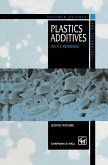
16,99 €
Versandfertig in 2-4 Wochen

Broschiertes Buch
An A-Z reference
1998
23. Oktober 2012
Springer / Springer Netherlands
978-94-010-6477-4
| Gebundenes Buch | 191,99 € | |
| eBook, PDF | 177,95 € |
Gebundenes Buch
An A-Z reference
1997.
30. November 1997
Chapman & Hall / Springer Netherlands
Ähnliche Artikel


20,99 €
Versandfertig in 2-4 Wochen

10,99 €
Versandfertig in über 4 Wochen

11,99 €
Versandfertig in über 4 Wochen
Broschiertes Buch
2 Revised edition
12. November 2012
Boldre Marine

13,99 €
Versandfertig in über 4 Wochen

20,99 €
Versandfertig in 2-4 Wochen
Gebundenes Buch
a haunting dystopian mystery from the author of Chosen Ones
18. Oktober 2022
Hodder & Stoughton

18,99 €
Versandfertig in über 4 Wochen
Broschiertes Buch
19. Oktober 2015
Pen & Sword Books Ltd

10,99 €
Versandfertig in über 4 Wochen
Ähnlichkeitssuche: Fact®Finder von OMIKRON


